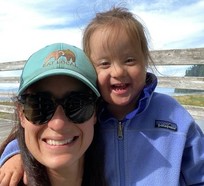
Hi, my name is Brian Frisina, DCYF ESIT Tribal Program Consultant. Each week I will provide a key term to help support us all in getting to know our Tribal Nations partners better.
This week’s term is: Usual and Accustomed Grounds.
As the number of settlers increased in the Washington Territory in the mid-1800s, the U.S. wanted to ensure land was available for settlement. Isaac Stevens, the first governor and superintendent of Indian Affairs of the Washington Territory, was authorized by the U.S. to negotiate with Washington tribes for the peaceful settlement of their traditional lands.
Stevens ultimately negotiated eight treaties with tribes in what would become Washington. The treaties established reservations for the exclusive use of the tribes. In addition, the tribes reserved their right to continue traditional activities on lands beyond these reserved areas. The Stevens Treaties all contain substantially similar language reserving the right to hunt, fish, and conduct other traditional activities on lands off of the reservations:
The right of taking fish, at all usual and accustomed grounds and stations, is further secured to said Indians in common with the citizens of the territory…together with the privilege of hunting, gathering roots and berries, and pasturing their horses on open and unclaimed lands.
There are 24 tribes that have off-reservation hunting rights within Washington State. Two of the tribes, the Confederated Tribes of the Umatilla Indian Reservation and the Nez Perce Tribe, are located outside of the state, but have hunting rights within Washington.
George Boldt, a conservative judge appointed to the federal court by President Dwight Eisenhower, upheld tribal treaty-reserved rights by interpreting the treaty language: “The right of taking fish at usual and accustomed grounds and stations is further secured to said Indians in common with all citizens of the Territory…” to mean that the tribes were entitled to half the harvestable number of salmon returning to or passing through the tribes’ usual and accustomed fishing places.
Sources:
Department of Fish and Wildlife, Tribal Hunting, Treaty history and interpretation, © 2020.
Northwest Indian Fisheries Commission, Olympia, WA, Understanding Tribal Treaty Rights in Western Washington.
|

We will spotlight a Parent Institute for Engagement (PIE) member each week. PIE is ESIT’s 12-month training program designed for parents/caregivers with children who have received early intervention services through an ESIT program. The goal of PIE is to enhance the leadership and advocacy skills of participants so they can become active leaders in their communities.
This week, we’d like to introduce you to Monica Heinberg.
Hi, my name is Monica and I am from King County. I currently work as a nurse coordinator for Boyer Children’s Clinic, where I evaluate children to see if they meet criteria for ESIT services in Seattle.
I have two children that benefited from the ESIT program. My daughter, Lona, was born with Down Syndrome. Lona received educational, speech and physical therapies until she turned 3. My son, Emile, was not walking at 18 months and received physical therapy. My family has benefited tremendously from ESIT. In fact, my experience with ESIT was so positive that I want to be a part of it. I want to bring to other parents that same feeling of support and sense of relief that ESIT gave me. I want to let them know that they are not alone and to reassure them that there is great support for their children and their family.
Welcome to PIE, Monica! We are glad you are here.
|
Early Intervention Providers and Administrators:
Twelve new training modules are available on the ESIT website’s Data Management System page under the “Training Guides and Exercises” section. In addition, they are available as a part of the Family Resources Coordinator (FRC) training hosted by ESD 112.
These modules cover topics including a systems overview, child records, IFSP development and transition. They are designed to be used by new FRCs, program administrators, intake coordinators and anyone else needing training prior to using the T-DMS.
Potential uses include;
- Training for new T-DMS users.
- Refresher training for current users.
- An Informational overview for any other direct service providers or program administrators who may not regularly use the DMS.
Contact frctraining@esd112.org for questions related to FRC training.
Contact your DCYF ESIT regional program consultant for any other questions regarding the use of the modules.
On Sept. 22, the ESIT team sent notification that new Child Outcome Summary (COS) descriptor statements would be available in the Transitional Data Management System (T-DMS) on Oct. 5. Due to unforeseen circumstances, the new descriptor statements and accompanying materials are not yet available.
Please continue the Child Outcome Summary Process using existing practices and materials on the ESIT website. The ESIT State Leadership Team will notify users when the new descriptor statements and materials are available.
If you have any questions, please contact your DCYF ESIT Regional Program Consultant.
Child Find is one of the most important public awareness requirements under the Individuals with Disabilities Education Act (IDEA) for both Part C – Washington State Early Support for Infants & Toddlers (ESIT) Program and Part B – Special Education Preschool Programming through Washington State Public Schools. Together, the Department of Children, Youth, and Families (DCYF) and the Office of Superintendent of Public Instruction (OSPI) must ensure statewide systems are in place to actively identify, locate and evaluate children birth to 21 who may have developmental delays or disabilities as early as possible, and who may require early intervention services (Part C) or be in need of special education and related services (Part B).
Local school districts need to have child find notices that are inclusive of children ages birth through 21. When a district receives a referral, they are responsible for getting the referral to the appropriate evaluation team based on the age of the student, that will determine eligibility. In the case of a referral for an infant/toddler, districts have joint child find responsibilities with their local IDEA Part C Early Intervention Provider Agency (EIPA). For children ages 0-3, the district’s obligation is focused on location, identification, and then referral to the local EIPA for evaluation and eligibility. [WAC 392-172A-02040] Under IDEA Part C, local EIPAs are responsible to coordinate the early identification (child find) of eligible infants and toddlers and their families (including targeted outreach to traditionally underrepresented populations) within their local geographic service area. [WAC 110-400-0070].
Given the changes in the birth to 5 early childhood special education landscape, influenced by the passing of SHB 6787, community level partners are encouraged to collaborate to identify what specific enhancements and/or updates may be appropriate for their unique child find systems. Grass roots development activities and implementation strategies are proven to be the most effective. They help ensure an equity mindset that must visibly and transparently serve as the underpinnings of a family-centered, coordinated, culturally and linguistically responsive local child find system.
Consider all of the community partners who need to be at the planning table – parent leaders, school and early intervention leaders, Tribal partners, early care and learning educators, early support practitioners, advocates and other valuable stakeholders. Examples of planning topics that local community partners may contemplate include consideration of (a) central referral options, (b) interpretive supports, (c) joint Part C and Part B screening teams, (d) shared assessment tool kits, (e) joint in-service child find trainings and (f) referral flow charts with local contact directory. Additional Child Find planning ideas and resources can be located on the federal-funded Early Child Technical Assistance Center website.
As local child find plans and activities continue to evolve, technical assistance needs may be identified. Technical assistance is available under Part C by contacting Michelle Baker, ESIT Program Consultant, at michelle.baker@dcyf.wa.gov. Technical assistance under Part B is available through Ryan Guzman, OSPI Early Childhood Special Education Coordinator at ryan.guzman@k12.wa.edu.
All Washington early intervention providers are asked to complete a quarterly survey regarding their training on and use of the new ESIT COS Decision Tree. As a state early intervention system, our aspirational target is that by July 2021 100% of providers will use the decision tree with 80% of their families when selecting a descriptor statement. This will increase the quality of our COS data and provide an avenue for meaningful engagement in the process for the families we serve.
Here is the Decision Tree Survey.
The survey takes about five minutes to complete the first time and less each time thereafter.
Please complete the survey each quarter. By receiving your response each quarter, we will learn the following:
- How close we are moving toward the aspirational target (see above) over the course of the next year
- Challenges or barriers you encounter as you integrate the decision tree into your practice
- Successes and benefits of using the decision tree and training materials
- Potential edits to the decision tree or training materials
We appreciate your time and input in reaching this target together!
The Health Care Authority (HCA) received official notification from the Department of Health and Human Services (HHS) that the Public Health Emergency (PHE) has been extended until Jan. 21, 2021. Visit the HHS website for more information.
The UC Davis MIND Institute is conducting a telehealth study that may be a useful resource for families looking for evaluations or who are delaying in-person evaluations during the current pandemic.
Eight Reasons to say YES to Early Intervention: Supporting Families During the time of COVID-19
Thursday, Oct. 29 | 10 – 11 a.m.
Presented by Janet DesGeorges and Sara Kennedy
Click here to register
The Family Leadership in Language and Learning Center (FL3) has developed a new resource
for families on the topic of early intervention directed towards parents that can be used by
professionals and family-to-family support programs. This resource was developed as a result of
insights from providers who engage with families who may not or do not choose to enroll in
early intervention services and to explore further understanding of these families compared to
families in the past. Read more here.
Xfinity WiFi hotspots located in businesses and outdoor locations across the country is available to anyone who needs them for free - including non-Xfinity Internet subscribers.
|